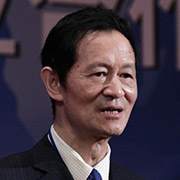The US economy had a poor start in 2016 with first-quarter GDP growing by a meager 0.5%, after an already weak Q4 of 2015 (GDP grew by 1.4%), according to the latest release by Bureau of Economic Analysis. Growth of personal consumption expenditure (PCE), which accounts for 71% of GDP and had remained mostly resilient since the global financial crisis, also slowed to 1.9%. Fixed private investment, another key fundamental of the economy, even decreased by 1.6%, after a small increase (0.4%) in the previous quarter. The Conference Board leading economic indicator rose slightly to 123.4 in March, but still below the level of December 2015 (123.5). IMF revised downward its estimate of US GDP growth rate by 0.2 pct in its latest WEO, released in April, and projects US GDP growth at 2.4% for 2016 and 2.5% for 2017. Just 15 months ago, IMF put its US GDP growth estimate at 3.5% and 3.6% for 2015 and 2016 respectively. A downside revision by one-third! The US economy seems entering a new normal: no steam, no recession.
Poor Demand Drags Down Growth
The poor world economic situation has dragged down US exports. Net exports of goods and services contributed a negative 0.34 pct to GDP growth. Poor domestic demand caused de-stocking which contributed another negative 0.33 pct. Among the two most important fundamentals, PCE has been slowing down, and fixed investment moved into negative area, with equipment investment experienced continuous sharp falls (-8.6% in Q1 2016, after -2.1% in Q4 2015). The two combined contributed 1.0 pct to GDP growth, which represents, more or less, the basic scenario of the economy.
It remains to be seen whether this slowdown over the past two quarters reflected accidental, non-cyclical factors (for instance, caused severe weather), or real economic cycles. The growth rate in Q1 2016 was very similar to Q1 2015 when GDP grew by only 0.6%. During Q2 2015, however, there was a strong rebound to 3.9%% and laid the base for the whole year growth rate at 2.4%. We have to follow closely Q2 of 2016 to see if there will be a similar strong rebound, and get a better picture by mid-year. Nonetheless, the current downward pressure in the US economy is worth enough caution and close examination.
Root Causes behind the Slowdown
The silver linings of the US economy are a sound employment situation, good performances in asset markets, and higher growth than most of other developed economies. However, all those have been more based on financial supports and monetary measures, rather than on a solid real economy.
A convincing indicator is the fall in industrial production. The total industrial production index stood at 103.4 (2012=100.0) in March 2016, 2.0% down over a year ago. Total industrial capacity utilization rate was 74.8, compared to 77.3 a year ago, and was not only lower than the 1992-2015 average of 80.0, but also lower than 1990/91 recession low (78.8).
Out of total industry, manufacturing index grew by only 0.4%, while mining was sharply down by 12.9%. The index of consumer-goods production had zero growth, while that of investment goods fell by 1.7%. It means that both consumption and investment were weak.
President Obama, from the very beginning of his tenure in early 2009, called for a resurgence of manufacturing, and resting the economy on a solid base of real economy. Seven years have elapsed and that is not yet in sight.
The direct reason for poor performances of industrial production is poor investment. The poor investment, in turn, was caused by poor profit status. Total corporate pre-tax profit was $1,890.3 b (annualized) in Q4 2015, down 8.4% from Q3 and 15.0% lower than the whole year of 2015. The year in turn, was 5.1% lower than 2014. With a weak profit prospect, there was little drive for production and investment.
An important reason for personal consumption slowdown lies in the slowdown of personal income increase. Total disposal personal income reached $13,681.9 b (annualized) in Q1 2016, a nominal growth of 0.8% over Q4 2015 and 2.1% up over whole year of 2015. The weak growth of income resulted in an even weaker growth in consumption, which grew by 0.6% and 2.0% respectively, as the middle income group tends to spend less when there is not a strong income growth future on the horizon.
Implications for the world economy and China-US Trade
As the world largest economy, the US accounts for 22.5% of total world GDP in 2015 and contributed 0.54 pct to world growth of 3.1% and has been an important engine for world growth. The slowdown in the US economy will not only reduce contribution to world growth directly, but also affect other developed economies indirectly. The IMF has projected world GDP growth rate at 3.2% for 2016, accelerating by a tiny 0.1 pct. The absence of a strong rebound in the US economy will add weakness to the already weak world economy.
The downward pressure in the US economy has also cast a shadow in China-US trade. After two years of weak growth, the bilateral trade fell considerably during Q1 of 2016. According to China Customs data, Chinese exports to the US fell by 8.8% y-o-y, and imports fell by 14.1%, thus adding difficulties to its own growth at home.
The US official data has shown a different problem. The US Census data showed that, during the first two months of 2016, the US goods trade deficit with China hit $57.05 billion, more than 50% of its total global trade deficit ($112.14 b) for the first time in history, due to much worse performance of its exports to China than imports from there. If this trend continues, trade frictions and complaints from US interest groups are likely to rise. China, on the other hand, will also find it difficult to expand imports considerably from the US due to inadequate home demand.
A possible solution is increasing the US technology and equipment exports to China, not only helping Chinese industrial upgrading, but also helping the US production. The second solution could be a closer collaboration between both governments and business to clinch more PPP projects in US infrastructure investments, which certainly supports manufacturing and jobs in the US , and exports and green-field investments from China. The third solution lies in the acceleration and conclusion of Bilateral Investment Treaty, which will give a significant push to two-way cross-border investments and provide a fresh impetus to both economies.




